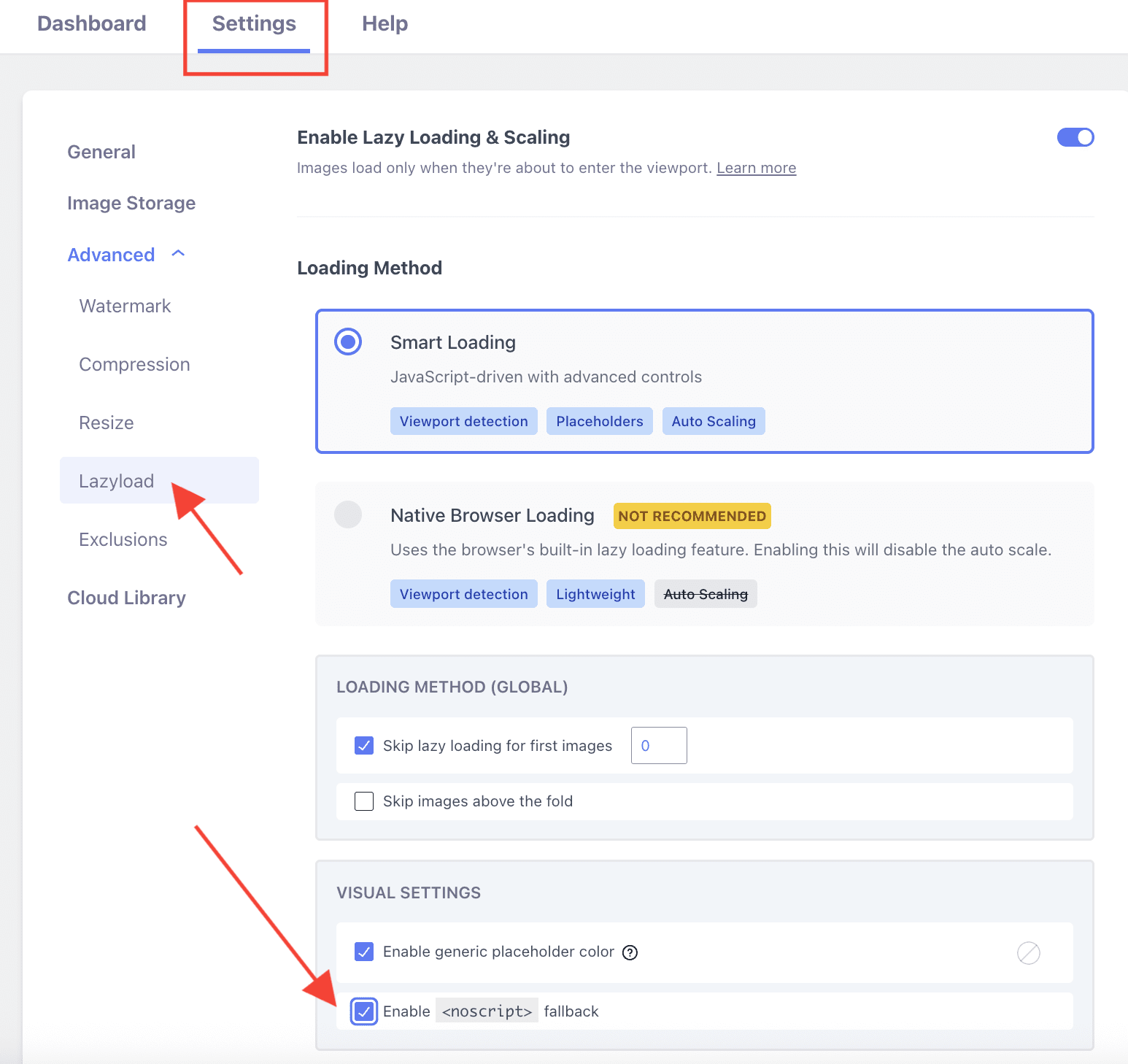Noscript Tag
For Optimole and other web optimization tools, the <noscript> tag is particularly useful in the context of lazy loading images. Lazy loading is a technique where images are only loaded when they are about to become visible on the user's screen, reducing the initial loading time of a web page. This technique relies on JavaScript to function, meaning that if a user's browser does not support or has JavaScript disabled, lazy loading would not work. Using the noscript tag, when such issues occur, the original image will be displayed.
| Enable the Feature |
User Site and Image Impact |
| Use Cases |
Benefits and Trade-offs |
| Useful Resources |
|
🔌 Enable the Feature
To enable this feature, navigate to WP Dashboard > Optimole.
- 1
-
Open the Settings tab.
- 2
-
Expand the Advanced accordion and open the Lazyload panel.
- 3
-
Use the toggle to enable the Noscript Tag.

🚀 User Site and Image Impact
Enabling the noscript tag in Optimole significantly enhances user experience. For visitors using browsers that do not support JavaScript-based lazy loading, the noscript tag ensures that images load efficiently. This not only prevents users from encountering broken or missing images but also enhances the overall aesthetics of your website.
In terms of image impact, Optimole dynamically generates and serves appropriately sized images, optimizing the loading speed. By utilizing the noscript tag, the plugin guarantees a smooth image-loading experience, even for users with limited browser functionalities.
In our case, the fallback image represents the original image from the Media Library.
🔄 Benefits and Trade-offs
Benefits
- Enhanced site performance
- Increased compatibility across browsers
Trade-offs
- Increased server requests
🧩 Use Cases
The feature can be very advantageous for multiple use cases, such as:
- Fallback content - when a website relies heavily on JavaScript for interactive features, such as dynamic forms, image sliders, or navigation menus, the
<noscript>tag can provide fallback content or alternative functionality for users who do not have JavaScript enabled. - Accessibility - web developers use JavaScript to enhance the user experience, but not all users have browsers that support JavaScript, especially in older devices or certain assistive technologies. By providing essential content within a
<noscript>tag, developers ensure that users with disabilities or users on non-standard devices can access critical information. - Browser compatibility - different browsers interpret JavaScript differently, and sometimes there are inconsistencies in how JavaScript functions across various browsers. By providing a
<noscript>fallback, developers can mitigate issues related to these inconsistencies and create a consistent user experience.
🗂Useful Resources
You may find useful these guides:
Still looking for an answer? Contact us!